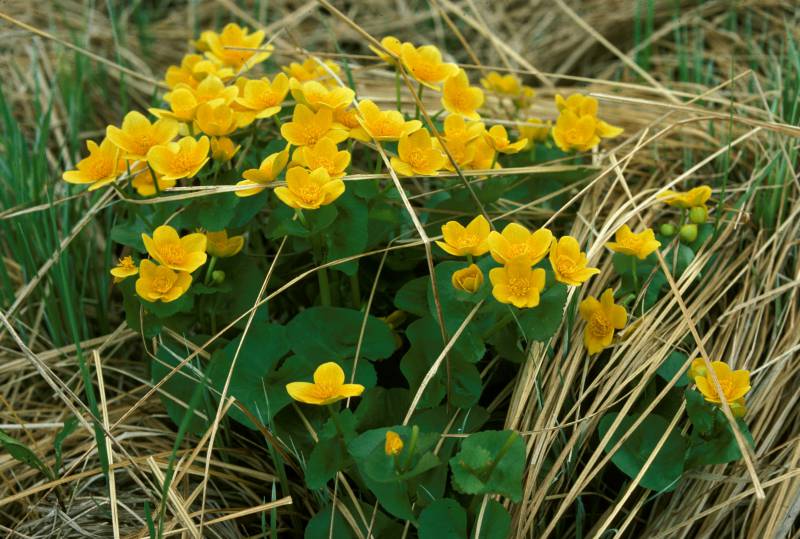Hosted by the University of Washington Herbarium, Burke Museum
Publication: Sp. Pl. 1: 558. 1753.
Origin: Both native and introduced populations
Herbarium search: CPNWH
Notes: FNA3: "Caltha palustris has been divided into different taxa, although plants have been most commonly assigned to two varieties in North America. Typical C . palustris var. palustris is characterized by permanently erect, stout stems that do not produce roots and shoots at the nodes after anthesis. The basal leaves are broadly cordate to reniform with coarsely crenate-dentate margins and overlapping basal lobes. Generally more than three flowers occur on a stem. In contrast, C . palustris var. flabellifolia [= var. arctica , var. radicans (T. F. Forster) Beck] is characterized by stems that sprawl with age and produce roots and shoots at the nodes after anthesis. The basal leaves are ± reniform with denticulate margins, and the basal lobes are widely divergent and do not overlap. Often fewer than three flowers occur on a stem. Caltha palustris var. flabellifolia is distributed locally throughout the range of C . palustris var. palustris ; it often grows in places with more extreme environmental conditions, such as shorelines, tidal areas, swiftly running streams and rivers, and areas with an arctic climate. Many arctic specimens can be assigned to this variety.
While Caltha palustris var. palustris and var. flabellifolia are distinctive in their extremes, they appear to represent elements along a morphologic continuum rather than recognizable taxonomic entities. For example, P.G. Smit (1973) found plants from Point Barrow, Alaska, to be dwarfed, few flowered, and prostrate, while specimens from southern Alaska were robust, many flowered, and erect. Between these two extremes a complete series of intermediates occurs. Based on that evidence, and considering the phenotypic plasticity known to exist in this species, the various specific and infraspecific segregates of C . palustris in North America are not recognized."
Last updated 3/14/2019 by Dan Post.

